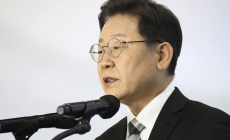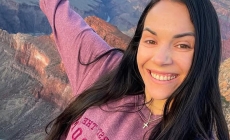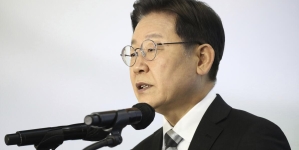-
A Professor Was Fired for Her Politics. Is That the Future of Academia? - 1 day ago
-
Big changes coming to Disneyland: ‘Monsters’ is out; ‘Avatar’ is in - 1 day ago
-
In War-Torn Nations, Trump’s Travel Ban Brings a New Hardship - June 5, 2025
-
As Trump Says He’s Stamping Out Antisemitism, He Advances Similar Tropes - June 3, 2025
-
How a former factory worker rose to South Korea’s presidency - June 3, 2025
-
$105 Million Reparations Package for Tulsa Race Massacre Unveiled by Mayor - June 1, 2025
-
Israel Bars Arab Foreign Ministers From High-Level West Bank Visit - May 31, 2025
-
Central California carjacking was an insurance scam, investigators say - May 31, 2025
-
U.S. Pauses Exports of Airplane and Semiconductor Technology to China - May 29, 2025
-
Missing California influencer found dead near Arizona hiking trail - May 28, 2025
Can Communities Survive the Fires?
Even as the Los Angeles wildfires continue to burn, the real, material toll is already apparent. Homes and businesses are gone. So are schools, supermarkets and houses of worship.
These fires have also robbed some Californians of something more intangible: a sense of community. What defines a community? Though often a physical space, it’s also more vibes-based and amorphous — the networks of feeling among its members and their environment, built and natural.
Already, online and in conversation, Angelenos are memorializing what they lost in the blazes that incinerated the Pacific Palisades, on the coast, and Altadena, an East Side enclave with a thriving Black middle class. The fish tacos at the Reel Inn. The pancakes at Fox’s. A synagogue. The Bunny Museum. Hiking trails. A pet supply store that did a brisk trade in backyard chickens. The accounting is early and incomplete. These fires will likely smolder for weeks. New ones kindle every day.
The eulogies show how loss is both personal and collective. JJ Redick, the Lakers’ coach who had moved to the Palisades recently, captured this in an interview over the weekend. His rented home had burned along with all of his family’s possessions. But he was struggling most, he said, with the loss of the community. “All the churches, the schools, the library, it’s all gone,” he said. He put his head in his hand when he spoke of the recreation center where his children had played sports. “It just hurts to lose that,” he said. What is the Palisades without these spaces?
What comes after
First settled by Indigenous peoples, then a property of Spain, then of Mexico, Los Angeles incorporated in 1850, the same year that California became a state. Rangy urban sprawl and frequent natural disasters make it feel less fixed than most major American cities. It is always growing, changing, renovating, reforming.
I grew up in the Palisades in the 1990s. I left at 17 for college, and nearly every time I came home, something I loved had disappeared — a nearby bookshop, a diner. Each loss was a pinprick. It was also a real-world example of the Ship of Theseus thought experiment: How much of a neighborhood can be replaced before it isn’t your neighborhood anymore, before it isn’t your home? Now the losses are happening all at once, not slowly over time. With them comes another comprehensive loss — a civic identity, uninsurable, nonreimbursable.
Some have argued that these neighborhoods shouldn’t be rebuilt, or not in the same way. They point to a 1998 essay by the eco-critic Mike Davis, “The Case for Letting Malibu Burn.” But Malibu has burned often, and for better or worse it has always come back. Likewise, these neighborhoods will almost certainly return. There will be new schools, new churches, new recreation centers. As an Angeleno, you have to witness only so many natural disasters to recognize the city’s resilience.
The next Palisades won’t be the same. Neither will a future Altadena. (Whether they will still be accessible to middle-class families remains an open and necessary question.) And it’s unlikely that they’ll feel the same. At least not for a very long time. But for now those communities live on in the people comforting one another, helping one another, remembering and recovering.
With luck, adequate government funding and very hard work, these places might build back safer, better able to withstand what a changing climate will bring. For a century, Los Angeles has been a dream factory. Its residents, mindful of what they have lost, grateful for what they have retained, might dream something brighter.
Now is a time to mourn and help and heal. Soon it will be a time to begin again. Los Angeles, after all, loves nothing more than a sequel.
For more
THE LATEST NEWS
Gaza Cease-fire
Politics
Opinions
Trump’s return to office will discourage migrants from seeking health care. Doctors should make sure that migrants know they’re safe in their exam rooms, Danielle Ofri writes.
De-gendering terms — like dropping “-ess” from “actress” — is a worthwhile language endeavor, John McWhorter writes.
Tennis: The American Danielle Collins heard boos from the Australian Open crowd after her win, but said afterward the disdain only motivated her more to earn a “big fat paycheck.”
Unrivaled: A new women’s 3-on-3 basketball league, featuring some of the world’s best players, begins today.
In a new essay collection, Shane and Hannah Burcaw, an influencer couple, explore “interabled” relationships, where one person has a disability and the other doesn’t. They say people are very curious about the caregiving aspects of their relationship, but they argue that is just a part of romantic love.









